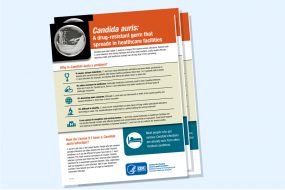Candida auris
Updated Resource: Worsening Spread of Candida auris in the United States, 2019 to 2021
CDC encourages all U.S. laboratory staff who identify C. auris to notify their state or local public health authorities and CDC at candidaauris@cdc.gov.
Learn more about how CDC uses whole genome sequencing to detect outbreaks of C. auris in healthcare facilities.




